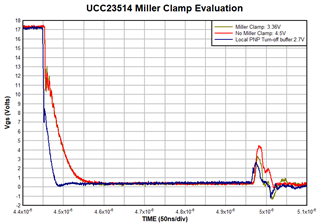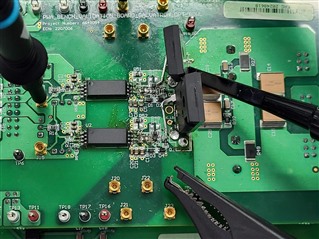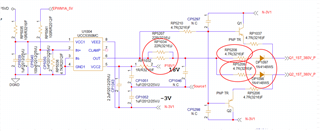Tool/software:
Hi
When OUT is low, is it possible to connect to the VEE voltage of -3.5V through PNP operation as below?
Can I connect to VEE, not source of FET?

Thanks
This thread has been locked.
If you have a related question, please click the "Ask a related question" button in the top right corner. The newly created question will be automatically linked to this question.
Tool/software:
Hi
When OUT is low, is it possible to connect to the VEE voltage of -3.5V through PNP operation as below?
Can I connect to VEE, not source of FET?

Thanks
Hi David,
Yes, with the only question being Miller injection Vgs impedance out of the gate.
I always used to think that turn-off inductance was the dominant factor in a Miller clamp. However, I have now had the chance to measure Miller injection with a PNP turn-off (0.5cm loop) vs. a further away Miller clamp (5cm loop) with a strong Miller injection, and I am now a believer that Rol is the dominant impedance, not inductance. The Miller injection frequency is not that high. Maybe 20-40MHz, and therefore inductance is not dominant.
A turn-off PNP can provide the tightest, lowest Vgs turn-off inductance loop if you connect it locally to the FET source (image below).
The Miller injection path from the gate, through -3.5V supply, back to the source will be much longer and higher inductance. However, it has the advantage of lower voltage. In my testing, the additional length did not create a higher impedance. You should still try to keep the layout tight.
Best regards,
Sean
Miller clamp pin vs. Local PNP buffer: Good enough vs. Best

Observe very tight blue wiring of the low-side PNP buffer! It is right between the FET gate and source, while the Miller clamp is inside the gate driver.

Best regards,
Sean
Hi Sean
Thanks for your support.
I have additional questions.
1. Is it necessary to use the diode of 1N4148WS below to separate the PNP circuit from the gate drive circuit?
2.RP1034,RP1032 (22R //2) RP5208,RP5209 (4R7) circuit is configured, but is it advantageous for current equilibrium to use a small RP5208,9 for common resistance to use large RP1032,4? Conversely, is it advantageous to use a small RP1032,4 and a large individual RP5208,9?

Thanks
Hi David,
1. The diode is needed to make sure the PNP is strongly driven. That way you will get the most drive strength. If you do not have this diode, the output drive strength will be lower, since the OUT voltage will be loaded and the base current will be lower.
2. I haven't tried using a RP1034,RP1032 (22R //2) common type resistor. I always put all of the desired turn-on resistance in the individual path. This will maximize the resistance between the gates, which will avoid internecine oscillations during turn-on of the high-side. It may not be a significant difference as long as there is still resistance between the gates, but I would recommend using RP5208,9 for all the resistance and shorting RP1034.
Best regards,
Sean